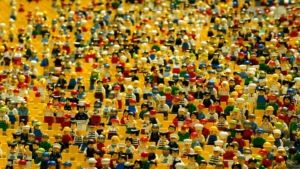News
Lego brand value continues to skyrocket in 2017
This article is more than 8 years old.
DSV, Vestas, Coop and Pandora also improved considerably

Lego knows a thing or two about branding (photo: Pixabay)
There seems to be no stopping the Danish toy producer Lego in its ascendancy in the national and global brand rankings.
According to the latest annual brand valuation report by Brand Finance, one of the leading valuation and strategy consultancy firms, the value of Lego’s brand increased by 68 percent to about 50 billion kroner compared to last year.
“Lego is also the strongest brand, not just in Denmark, but globally. Lego scores highly on a wide variety of BSI metrics such as familiarity, loyalty, promotion, marketing investment, staff satisfaction and corporate reputation,” Brand Finance wrote.
“The building blocks for Lego’s brand strength have always been present; however, in the last few years this strength has been enhanced through a combination of strategic partnerships and licensing deals.”
Brand Finance pointed to the release of ‘The Lego Movie’ in 2014 and ‘The Lego Batman Movie’ last year as commercial and critical successes that contributed to unparalleled marketing platforms for the company.
Furthermore, Lego’s video game deals and its co-operation with ‘Star Wars’ has also proven to be potent brand boosters.
Earlier this year the company was named the most powerful brand in the world by Brand Finance.
READ MORE: Lego named most powerful brand in the world
Maersk and Carlsberg woes
In the Danish top five, Arla came second with a brand value of about 24.7 billion kroner, followed by Danske Bank (23.8), Maersk (22.5) and Pandora (19.2). The top 10 were completed by ISS (14.1), Vestas (10.15), Novo Nordisk (10.1), DSV (9.9) and Coop (9.6).
The biggest improvement was seen by DSV with a value increase of 72 percent compared to last year. Vestas (up 63), Coop (52) and Pandora (42) also impressed.
Maersk, on the other hand, dropped from second to fourth after a 10 percent decrease.
Other notable companies to figure in the top 50 were Carlsberg (down four spots compared to last year at 13th), Danfoss (14), Jyske Bank (20), Ecco (23), VELUX (30) and Bang & Olufsen (47).










































